The Greater Accra region of Ghana is home to an incredible variety of birds. From colorful parrots and vibrant kingfishers to shy sunbirds and majestic raptors, the area is home to an astounding range of avian life.
With its diverse habitats ranging from lagoons to tropical rainforests, the region is a bird-watcher’s paradise.
With over 500 species of birds, Greater Accra provides an incredible opportunity for birders to observe, photograph, and learn about the incredible avian diversity in the region.
1. Senegal Coucal
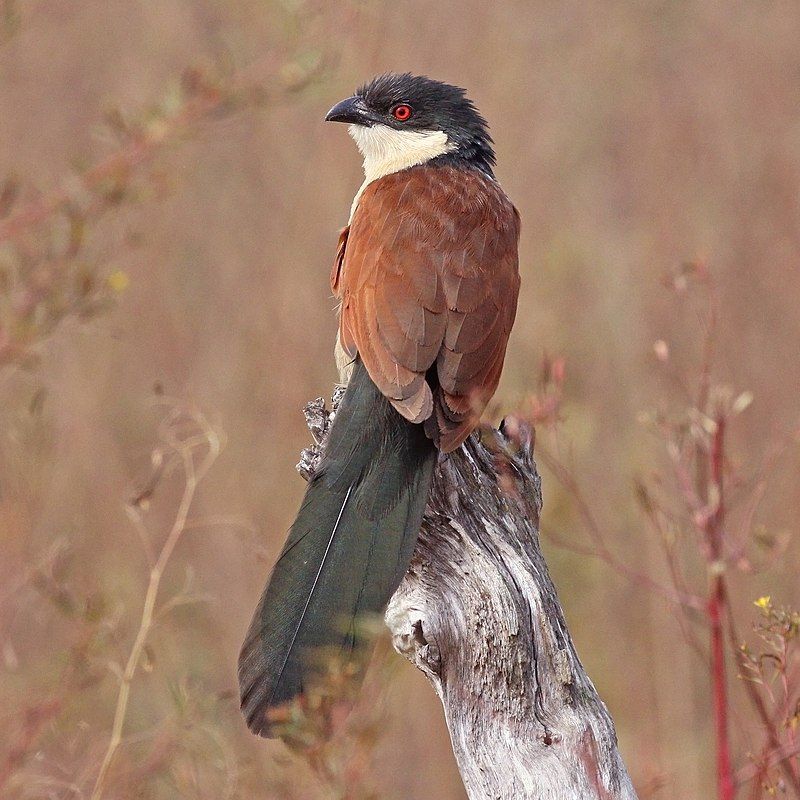
The Senegal coucal is a medium-sized bird belonging to the Cuculiformes order, which is made up of various species of cuckoos, roadrunners, anis, and hoatzins.
This species of bird is mainly found in lightly wooded areas and savannahs located in the central and southern regions of Africa. They are members of the coucal genus, which includes various types of cuckoos.
These birds have a black head, back, wings, and tail, while their breast, abdomen, and belly are white. They have long, broad tails and are usually found in pairs or small groups. These birds feed mainly on insects, although they may also eat other small animals and fruits.
They are agile flyers and are known to be quite vocal. They build nests in tree hollows or other cavities and lay their eggs directly on the ground. The Senegal coucal is a shy and timid species and will generally flee when disturbed or approached.
Overall, the Senegal coucal is a unique species of bird that belongs to the Cuculiformes order. It is found in lightly wooded areas and savannahs throughout the central and southern regions of Africa.
It feeds mainly on insects, but may also consume other small animals and fruits. This species is also known for its agility and vocalizations and is quite shy and timid when disturbed or approached.
| Kingdom | Animalia |
| Phylum | Chordata |
| Class | Aves |
| Order | Cuculiformes |
| Family | Cuculidae |
| Genus | Centropus |
| Species | C. senegalensis |
2. Laughing Dove
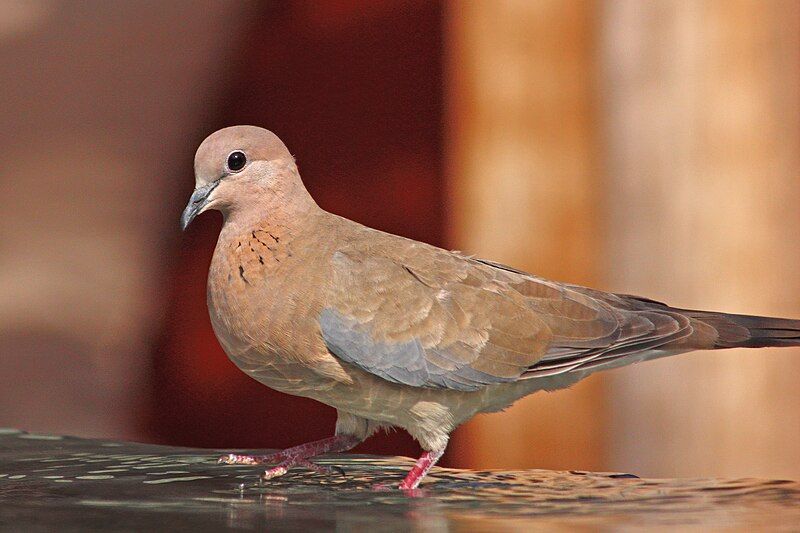
The Laughing Dove is a species of small pigeon found in Africa, the Middle East, South Asia, and Western Australia. It is a resident breeder, meaning it is not a migratory species and instead returns to the same area to reproduce each year.
This bird has a unique history in Western Australia, as it was originally released from Perth Zoo in 1898. Since then, it has successfully established itself in the wild, becoming a common sight in the region.
The Laughing Dove is known for its distinctive, cooing call, which can be heard throughout the day. Its plumage is a mottled brown color with distinctive black and white markings on its wings and tail.
They are usually found in small groups, foraging for food on the ground or perched in trees. They feed on seeds, grains, and small insects, making them important members of the ecosystem.
| Kingdom | Animalia |
| Phylum | Chordata |
| Class | Aves |
| Order | Columbiformes |
| Family | Columbidae |
| Genus | Spilopelia |
| Species | S. senegalensis |
3. Grey Parrot
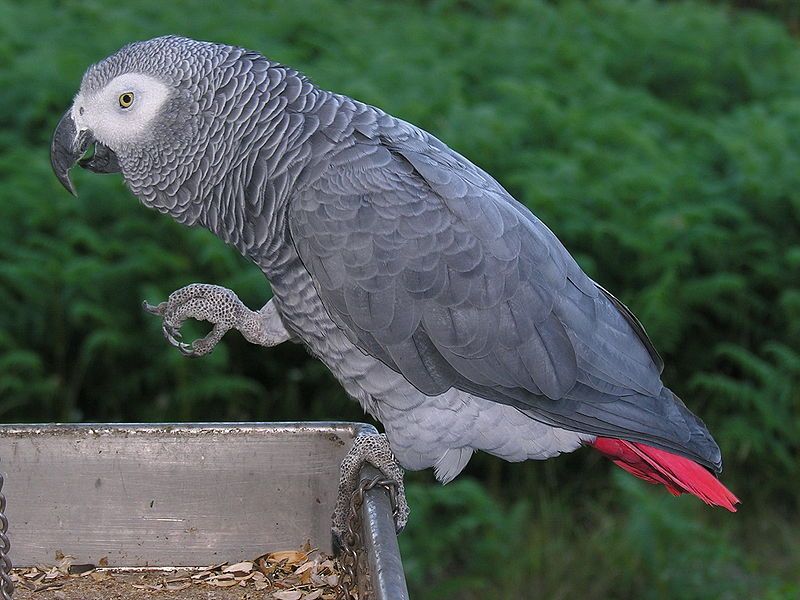
The Grey Parrot is a species of parrot found in the Old World and is a member of the Psittacidae family. It is known by a few different names, such as the Congo Grey Parrot, Congo African Grey Parrot, or African Grey Parrot.
It was once thought that the Timneh Parrot was a subspecies of the Grey Parrot, but it has since been categorized as a distinct species. The Grey Parrot is a rather large bird, with a length of 33 centimeters and a weight of about 400 grams.
It is primarily grey in color, with a lighter shade of grey on its chest and head. The Grey Parrot is a highly intelligent bird and can be taught to mimic human speech. They are also known to be quite affectionate and can form strong bonds with their owners.
| Kingdom | Animalia |
| Phylum | Chordata |
| Class | Aves |
| Order | Psittaciformes |
| Family | Psittacidae |
| Genus | Psittacus |
| Species | P. erithacus |
4. African Grey Hornbill
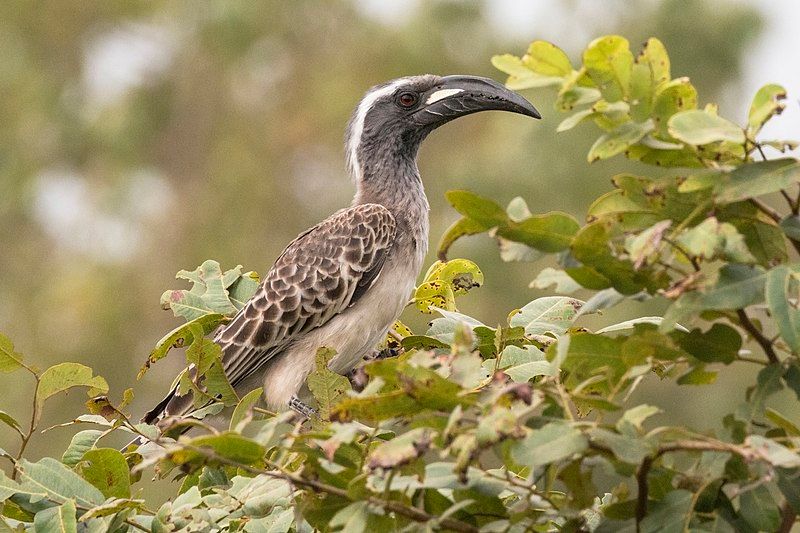
The African grey hornbill is a species of bird that belongs to the hornbill family, which is found mainly in areas with tropical climates. These birds are widely distributed throughout sub-Saharan Africa and the southwestern part of the Arabian Peninsula.
In these regions, they are usually permanent residents and breeders, meaning they spend their entire life cycle in these areas. The African grey hornbill is a medium-sized bird with a unique bill shape, which is what gives the hornbill family its name.
This species is mostly grey in color with a black tail and has white markings on its wings. Its bill is blackish in color with a yellowish-orange base and eyes that are yellow and black.
In terms of behavior, the African grey hornbill is very social and lives in flocks of up to 20 individuals. They are mainly active during the day and feed on a variety of fruits, nuts, insects, and small animals.
During the breeding season, the male will build a nest in a tree hole and the female will lay her eggs inside. The male then seals the entrance to the nest with a thick layer of mud to protect the eggs from predators.
Once the eggs have hatched, the male reopens the entrance for the chicks to escape. The African grey hornbill is an important species in its native habitats, as it helps to disperse seeds from the fruits they eat and keeps the insect population in check.
It is also an important cultural species in some areas, where it is seen as a symbol of good luck and fertility. As such, the conservation of their habitats is of utmost importance in order to ensure their survival.
| Kingdom | Animalia |
| Phylum | Chordata |
| Class | Aves |
| Order | Bucerotiformes |
| Family | Bucerotidae |
| Genus | Lophoceros |
| Species | L. nasutus |
5. White-faced Whistling Duck
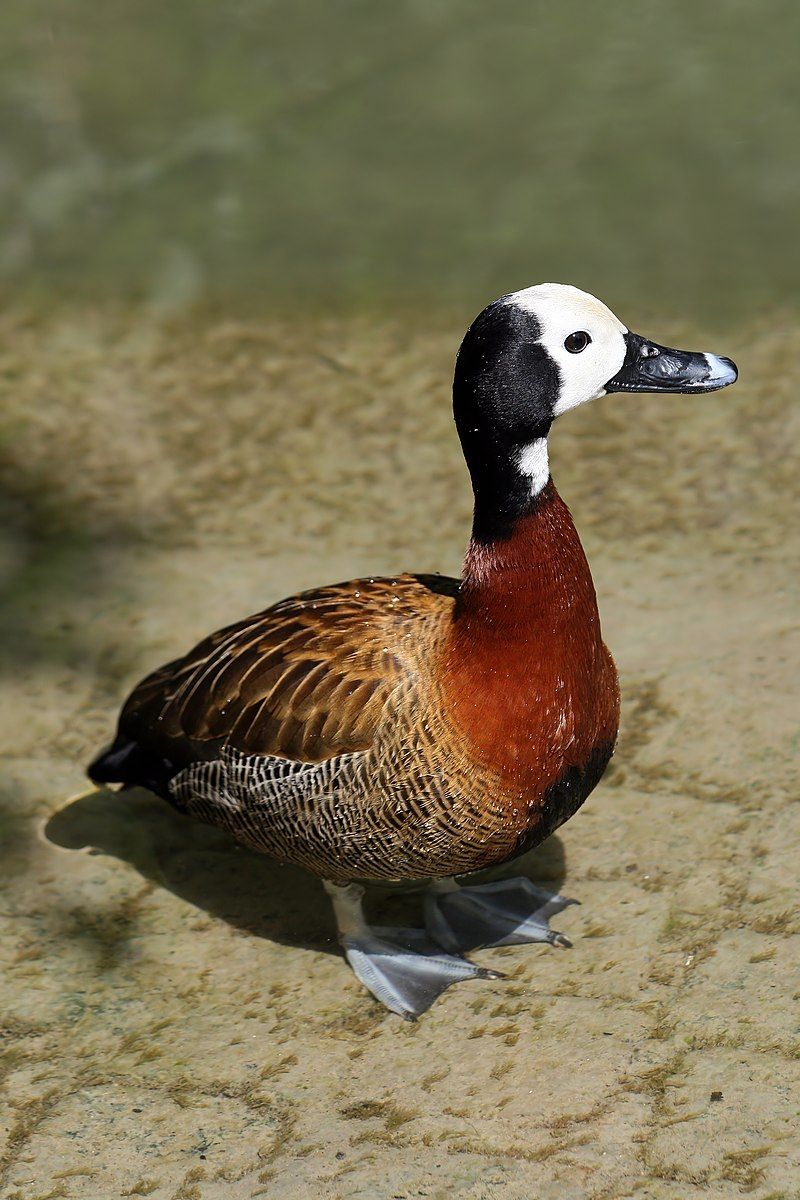
The white-faced whistling duck is a species of duck native to sub-Saharan Africa and South America. Its name is derived from the sound it makes, which is similar to a whistling sound. This species of duck is highly sociable and often travels in large flocks.
At certain locations, it is possible to witness the spectacular sight of thousands of these ducks arriving in the morning.
It is an impressive sight that is both beautiful and spectacular. The white-faced whistling duck is highly adaptable and can live in a variety of habitats, including wetlands, swamps, and ponds. They feed primarily on aquatic plants, insects, and crustaceans.
Additionally, they are also known to scavenge for food. Their plumage is primarily white with a black crown and a black back. They have long legs, which make them adept swimmers. The white-faced whistling duck is listed as a species of least concern by the IUCN.
However, their numbers have been declining due to the destruction of wetlands, hunting, and other human activities. As a result, their populations have become fragmented and can be found in isolated pockets.
Conservation efforts are underway to protect the species and their habitat.
| Kingdom | Animalia |
| Phylum | Chordata |
| Class | Aves |
| Order | Anseriformes |
| Family | Anatidae |
| Genus | Dendrocygna |
| Species | D. viduata |
6. Parrots
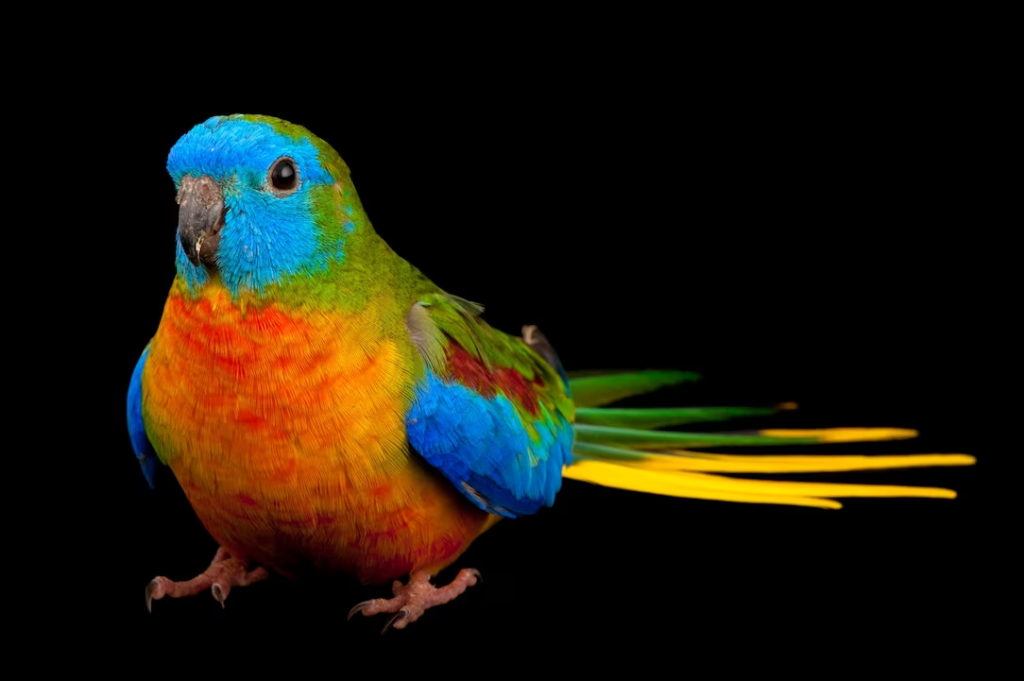
Source: ebird.org
Parrots are a type of bird belonging to the order Psittaciformes, which is comprised of four distinct families. These four families are Psittaculidae, Psittacidae, Cacatuoidea, and Strigopidae.
They are found in warmer climates, such as tropical and subtropical areas, and consist of a total of 410 species in 101 genera. Parrots, also known as psittacines, have a wide range of sizes, shapes, and colors, and are among the most popular birds kept as pets.
They are known for their ability to mimic human speech, and their intelligence, which has been compared to that of a small child. They tend to live in flocks and some species are even able to form complex social structures.
Parrots are omnivorous, meaning they eat both plants and animals. Their diet consists of fruits, seeds, nuts, flowers, nectar, and insects. They also have a unique beak structure which allows them to crack open nuts and seeds.
This part of their diet helps them to obtain essential fats and proteins. Parrots are popular in the pet trade, and there are some species that are endangered due to the loss of their natural habitat.
In order to help protect these birds, many countries have laws that regulate the trade of parrots. They are also protected by CITES, an international agreement that helps to ensure the conservation of species.
Overall, parrots are unique birds that have an important role in the ecosystem. They are fascinating creatures that are sure to captivate anyone who takes the time to observe them.
| Kingdom | Animalia |
| Phylum | Chordata |
| Class | Aves |
| Clade | Psittacopasserae |
| Order | Psittaciformes |
7. African Green Pigeon
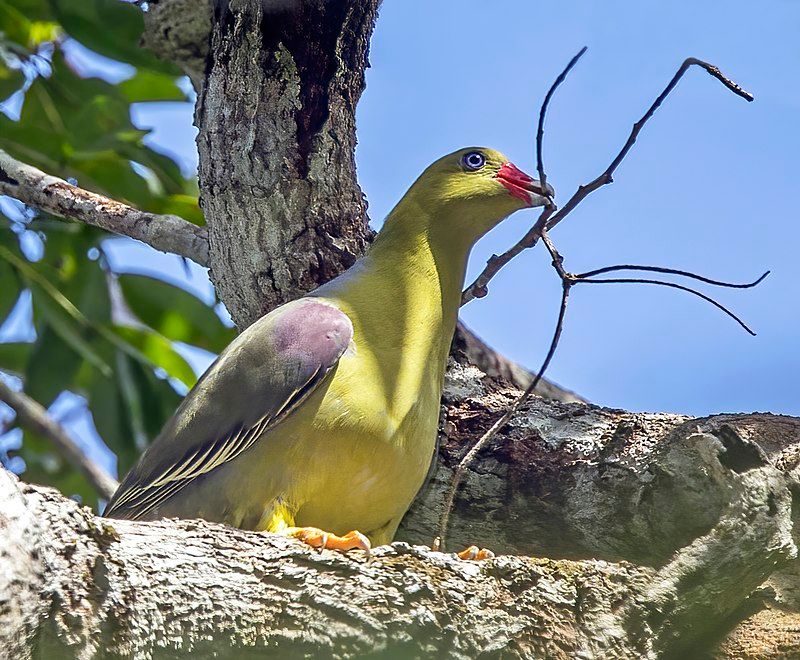
The African green pigeon is a species of bird in the Columbidae family and one of five green pigeon species in the Afrotropics. This species is found in a large portion of Sub-Saharan Africa with 17 accepted races.
The African green pigeon is a rather small bird, with its body length ranging from 22-23 cm and its wingspan measuring from 33-38 cm. The bird is characterized by its bright greenish-yellow plumage on its back, wings, and tail, as well as its chestnut brown breast and belly.
It has a small white patch on its wings and a black bill and eye. The African green pigeon is usually seen alone or in pairs and is typically found in wooded savannas, open woodlands, and moist forests. The species is omnivorous, eating both fruits and insects.
The African green pigeon plays an important role in its ecosystem, as it is a major seed disperser. This species is generally not considered threatened, but its population is decreasing due to human activities such as deforestation and hunting.
| Kingdom | Animalia |
| Phylum | Chordata |
| Class | Aves |
| Order | Columbiformes |
| Family | Columbidae |
| Genus | Treron |
| Species | T. calvus |
8. Rose-ringed Parakeet

The rose-ringed parakeet, also known as the ring-necked parakeet, is a type of bird from the parrot family. It is medium-sized and belongs to the genus Psittacula, which is part of the family Psittacidae.
This family of birds is also known as the true parrots, and includes species of all sizes, from small to large.
The rose-ringed parakeet is native to the Indian subcontinent and has been introduced in other parts of the world, and has become an invasive species in certain regions. It is a colorful bird, with a green body, and a pink or purple ring around its neck.
It is an intelligent and social bird and can be kept as a pet.
| Kingdom | Animalia |
| Phylum | Chordata |
| Class | Aves |
| Order | Psittaciformes |
| Family | Psittaculidae |
| Genus | Psittacula |
| Species | P. krameri |
9. African Jacana
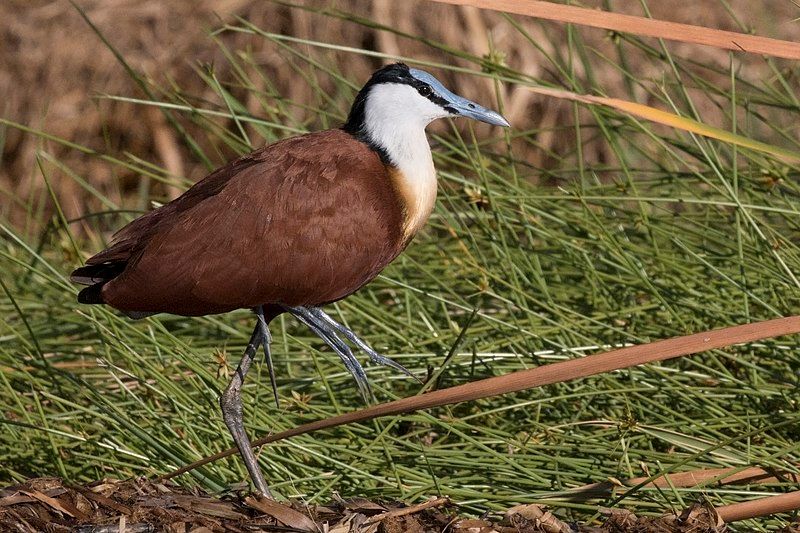
The African jacana is a unique species of wader that belongs to the family Jacanidae. It is native to sub-Saharan Africa, where it is widely distributed.
The African jacana has long toes and claws that allow it to walk on the floating vegetation of shallow lakes, which is its preferred habitat.
This is an evolutionary adaptation that allows the African jacana to take advantage of the safe and abundant food sources that can be found in shallow lakes. The African jacana is an omnivore, meaning it feeds on both plant and animal matter.
The diet of the African jacana consists of insects, mollusks, crustaceans, small fish, and even small amphibians. It also consumes a variety of aquatic plants, including algae and water lilies.
The African jacana is a solitary bird, but it will sometimes form small groups during the breeding season. The breeding season usually begins in the wet season and can last until the dry season.
During this time, the female will produce up to four eggs, which she will incubate until they hatch. The chicks are precocious and can feed themselves within a day of hatching.
The African jacana is an important species in its environment due to its ability to feed on aquatic vegetation, which helps to keep the area healthy.
This species has also been known to benefit from the presence of humans, as it has been known to take advantage of the food sources provided by agricultural activities.
| Kingdom | Animalia |
| Phylum | Chordata |
| Class | Aves |
| Order | Charadriiformes |
| Family | Jacanidae |
| Genus | Actophilornis |
| Species | A. africanus |
10. African Emerald Cuckoo
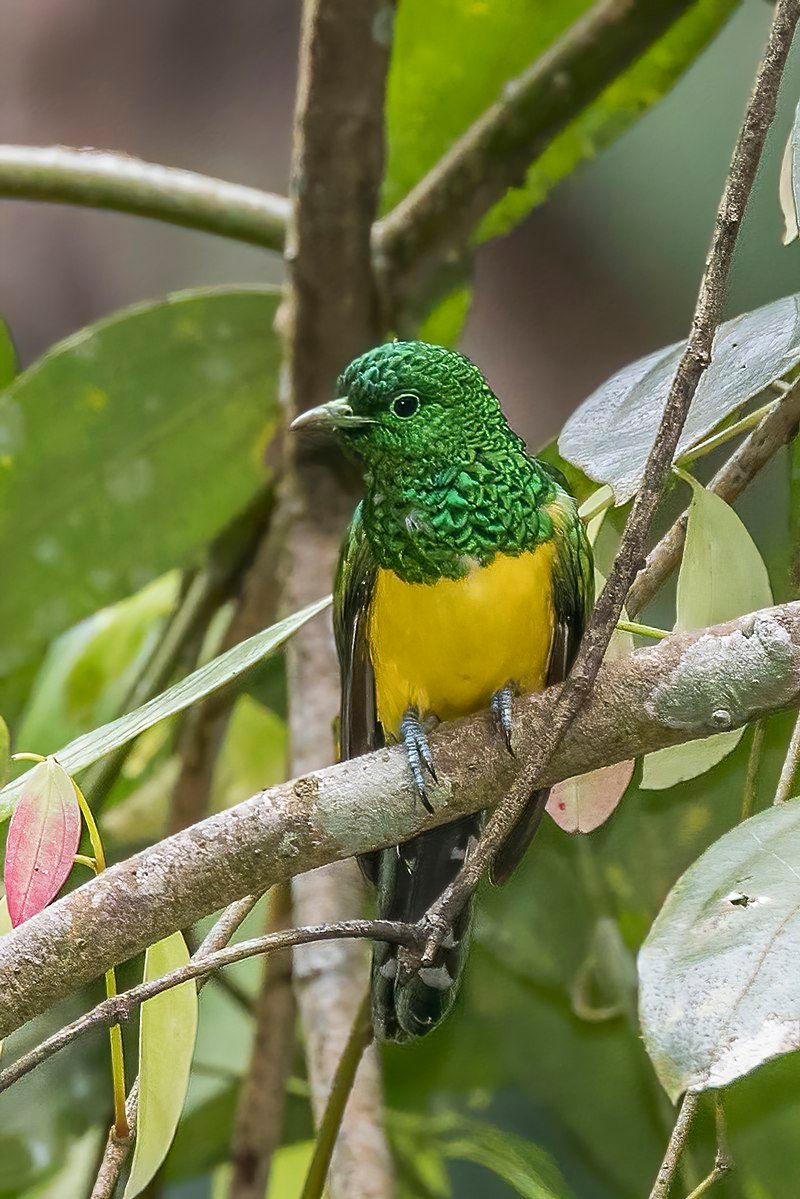
The African emerald cuckoo is a species of bird that is native to Africa. It is usually found in wooded savannas and has a bright green plumage, which gives it its name. The African emerald cuckoo has a slim body and a long tail, and its bill is short and curved.
It feeds mainly on insects, and will sometimes eat small fruits and seeds. The African emerald cuckoo is an important part of the African ecosystem, as it helps to control insect populations and disperse seeds.
It is also an important food source for other animals, such as hawks and eagles. The African emerald cuckoo is an interesting and important species, and its presence is an indication of a healthy African ecosystem.
| Kingdom | Animalia |
| Phylum | Chordata |
| Class | Aves |
| Order | Cuculiformes |
| Family | Cuculidae |
| Genus | Chrysococcyx |
| Species | C. cupreus |
11. Blue-headed Coucal
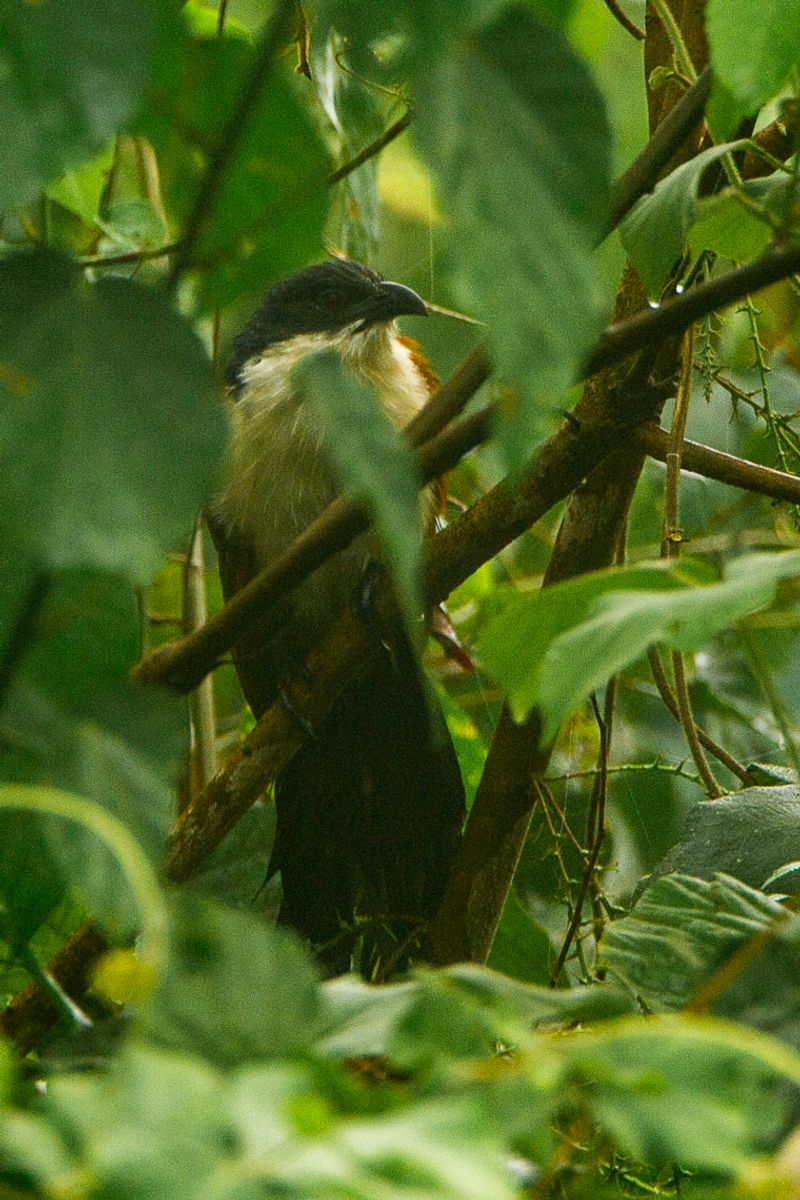
The blue-headed coucal is a species of cuckoo commonly found in tropical central Africa. It is a medium-sized bird, with a blue head and a black body. This species prefers to inhabit areas with high amounts of moisture, such as swamps, river banks, and forest edges.
In these wet areas, the blue-headed coucal feeds on the insects and other invertebrates that live in the water and on the land. It also consumes fruits, seeds, and plants.
The blue-headed coucal is unique among cuckoos in that it builds its own nest, instead of laying its eggs in the nests of other birds. The nests are made of sticks and grasses and are usually placed in the forks of trees.
The blue-headed coucal is an important part of the ecosystem of tropical central Africa, as it helps to control the populations of the insects and other invertebrates that it consumes.
| Kingdom | Animalia |
| Phylum | Chordata |
| Class | Aves |
| Order | Cuculiformes |
| Family | Cuculidae |
| Genus | Centropus |
| Species | C. monachus |
12. Blue-spotted Wood Dove
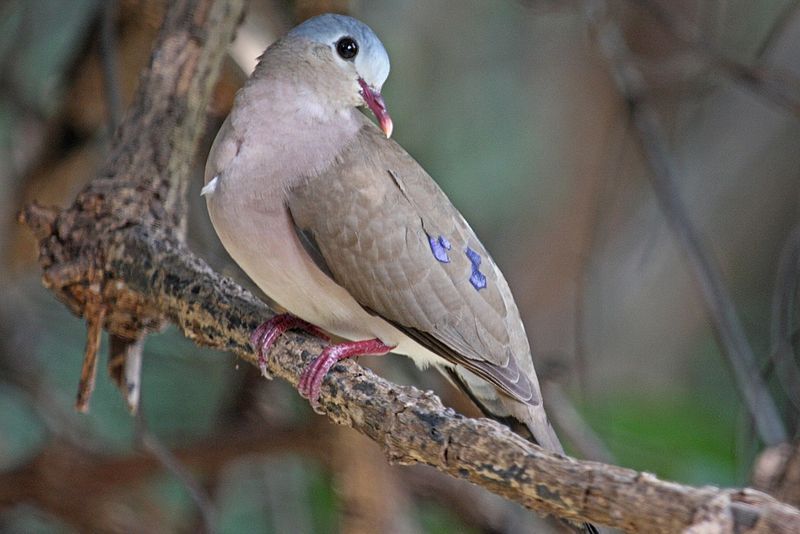
The blue-spotted wood dove is a species of bird that belongs to the family Columbidae. It is a widespread species, found in abundance in most of Africa south of the Sahel. This includes many countries in the continent’s western and central regions.
In East Africa, the dove is found only in some parts, while it is completely absent from the south of the continent. The blue-spotted wood dove can be identified by its blue-spotted feathers which are distinctive.
The size of the bird is also relatively small, measuring approximately 25 cm in length. It has a greyish-brown head and neck, with a white patch on the throat. The body is a greyish brown with white spots, and the wings are dark brown.
The tail is short and pointed. The blue-spotted wood dove is a social bird that usually lives in small flocks, often consisting of up to 20 individuals. It is usually found in open woodland and savannah areas, and it feeds mainly on seeds.
It also forages for fruits and other invertebrates. Breeding season usually occurs between April and June in most parts of its range.
The female typically lays two eggs in a nest built on a tree. The blue-spotted wood dove is listed as Least Concern by the International Union for Conservation of Nature (IUCN).
The species is not threatened globally, however, population declines have been observed in some parts of its range due to habitat loss and degradation. Therefore, continued conservation and monitoring of the species and its habitat are necessary for its long-term survival.
| Kingdom | Animalia |
| Phylum | Chordata |
| Class | Aves |
| Order | Columbiformes |
| Family | Columbidae |
| Genus | Turtur |
| Species | T. afer |
13. Cuckoos
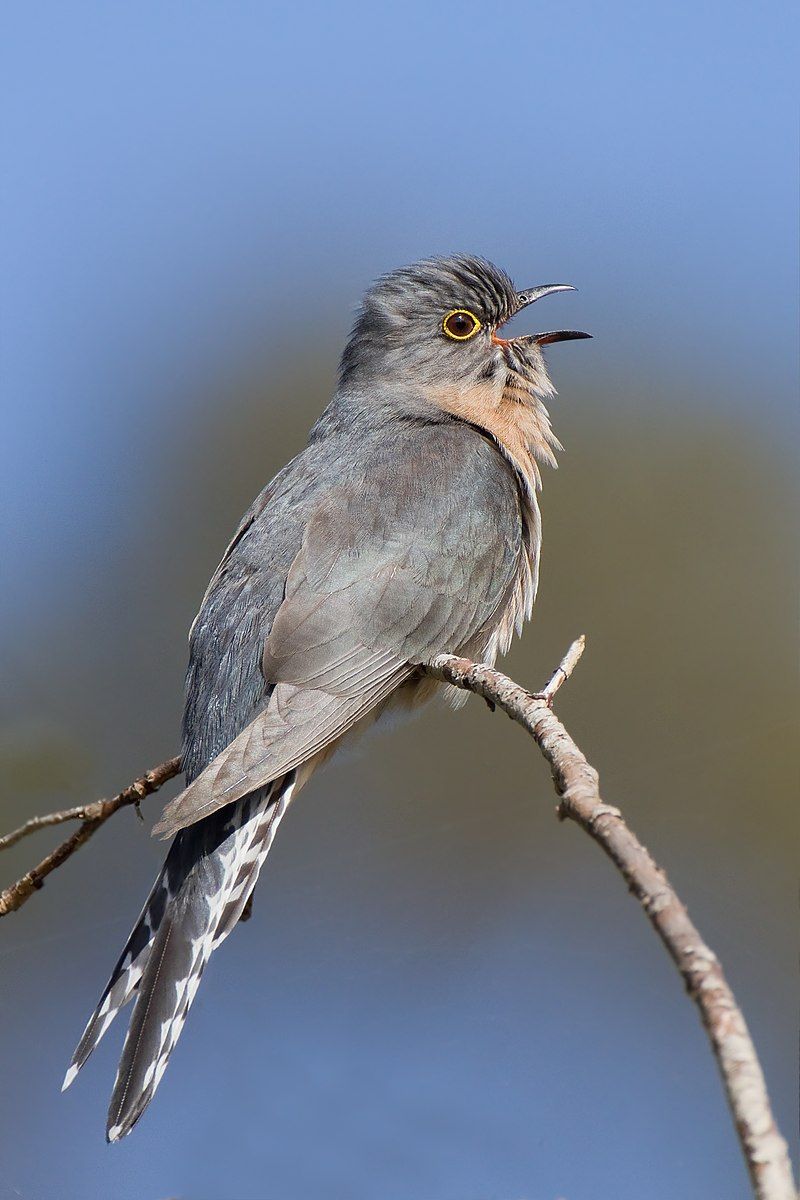
Cuckoos are a type of bird belonging to the Cuculidae family, which is the only bird family in the order Cuculiformes. Cuckoos come in many varieties, the most common of which is the European cuckoo.
Other members of the cuckoo family include roadrunners, koels, malkohas, couas, coucals, and anis. Some scientists even consider the coucals and anis to be separate families, known as Centropodidae and Crotophagidae, respectively.
These birds are distinguished by their long beaks and unique calls, which can be heard in many parts of the world. Cuckoos are highly adaptable and can be found in a variety of habitats, from tropical forests to grasslands.
They are omnivorous and feed on insects, small animals, fruits, and seeds. In some parts of the world, cuckoos are considered to be pests due to their consumption of crops and gardens.
| Kingdom | Animalia |
| Phylum | Chordata |
| Class | Aves |
| Clade | Otidimorphae |
| Order | Cuculiformes |
| Family | Cuculidae |
14. Diederik Cuckoo
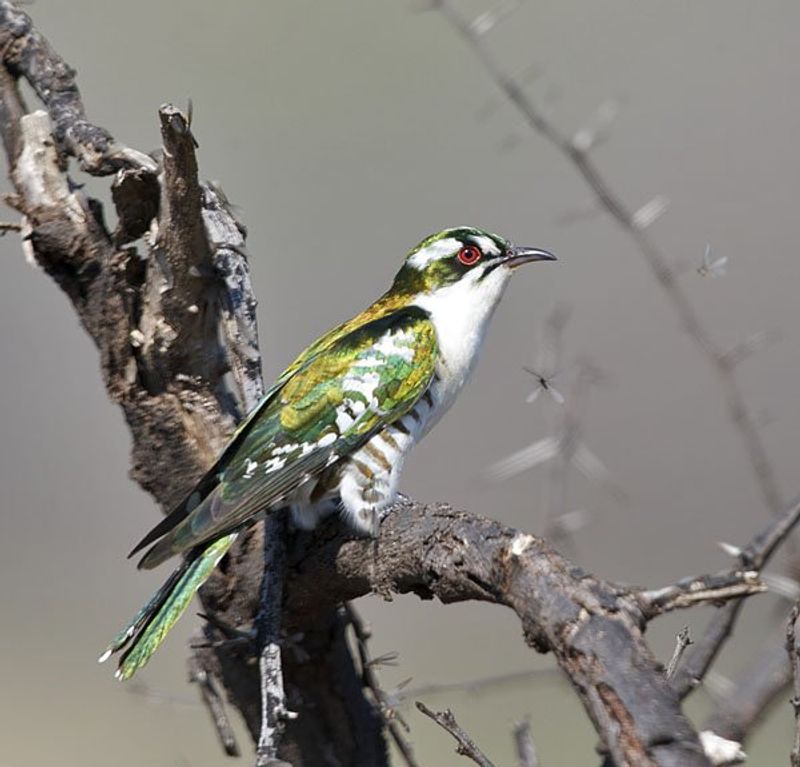
The Diederik Cuckoo is a bird belonging to the Cuculiformes order of birds. This order includes numerous species of birds such as Roadrunners and Anis. The bird was formerly known as the Dideric Cuckoo or Didric Cuckoo.
This species of cuckoo is most commonly found in parts of Africa and the Middle East. It is a medium-sized bird measuring about 20-25 cm in length. The Diederik Cuckoo has an overall greyish-brown body with white patches on its wings and tail.
It has a distinctive call which is a loud, metallic “cu-cu-cu” sound. The Diederik Cuckoo is a shy and retiring bird that is rarely seen in the open. It prefers to stay in the dense vegetation and is most active at night or in the early hours of the morning.
The diet of the Diederik Cuckoo consists of insects, small rodents, reptiles, and other small animals. It is a solitary bird and prefers to nest on its own. It builds its nest on the ground and lays two eggs which are then incubated by the female.
The Diederik Cuckoo is an interesting and unique bird that is part of the Cuculiformes order of birds.
| Kingdom | Animalia |
| Phylum | Chordata |
| Class | Aves |
| Order | Cuculiformes |
| Family | Cuculidae |
| Genus | Chrysococcyx |
| Species | C. caprius |
15. Hooded Vulture
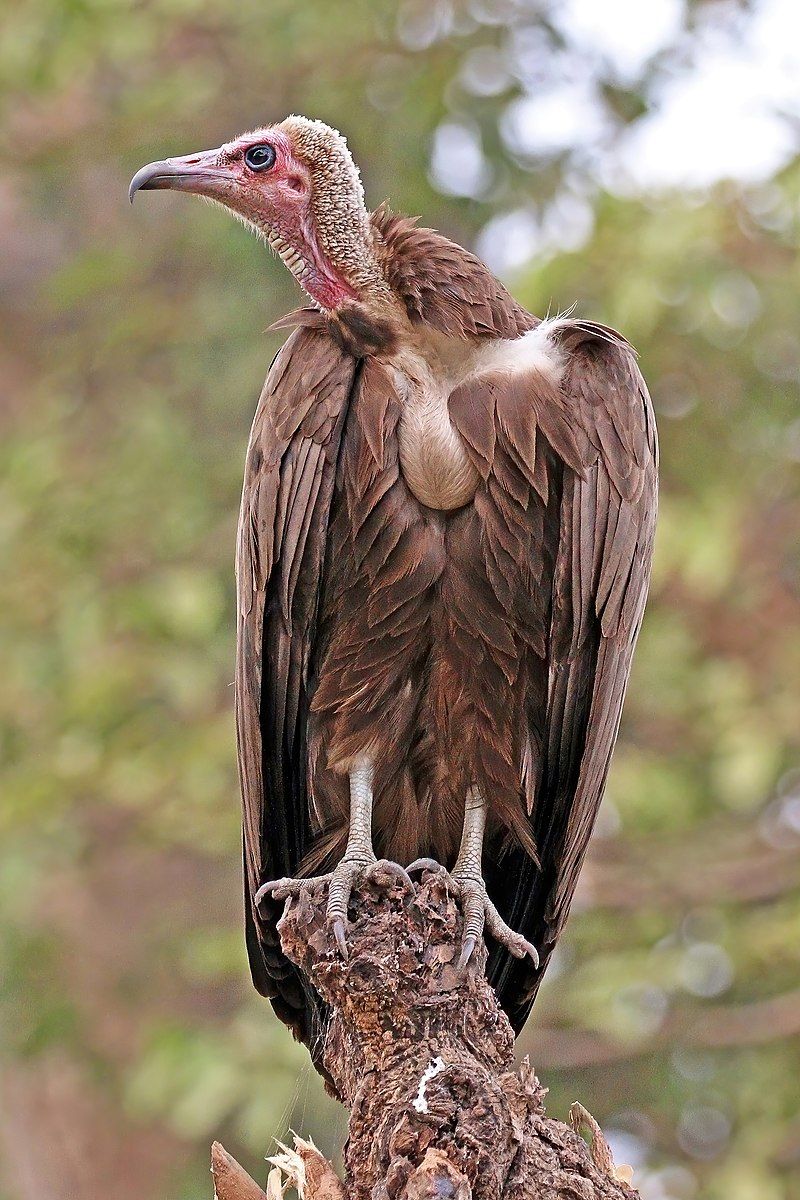
The hooded vulture is an Old World vulture, which is a type of bird found in the order Accipitriformes. This order also includes other birds of prey like eagles, kites, buzzards, and hawks.
The hooded vulture is the only member of the genus Necrosyrtes, which is closely related to the larger Gyps genus. Both of these are part of the Aegypiinae subfamily of Old World vultures. The hooded vulture is a large bird, with a wingspan of up to 1.8 meters.
Its plumage is mostly brownish grey, with a white neck and head. It feeds mainly on carrion and occasionally on small animals. It inhabits open woodlands, savannas, and grasslands.
It is found in parts of Africa, the Middle East, and India. The hooded vulture is classified as vulnerable by the IUCN due to its decreasing population.
Factors contributing to this decline include habitat loss, fragmentation, and degradation, as well as hunting and other forms of persecution. Conservation efforts are needed to help protect this species and its habitat so that its population can recover.
| Kingdom | Animalia |
| Phylum | Chordata |
| Class | Aves |
| Order | Accipitriformes |
| Family | Accipitridae |
| Genus | Necrosyrtes |
| Species | N. monachus |
16. Common Tern
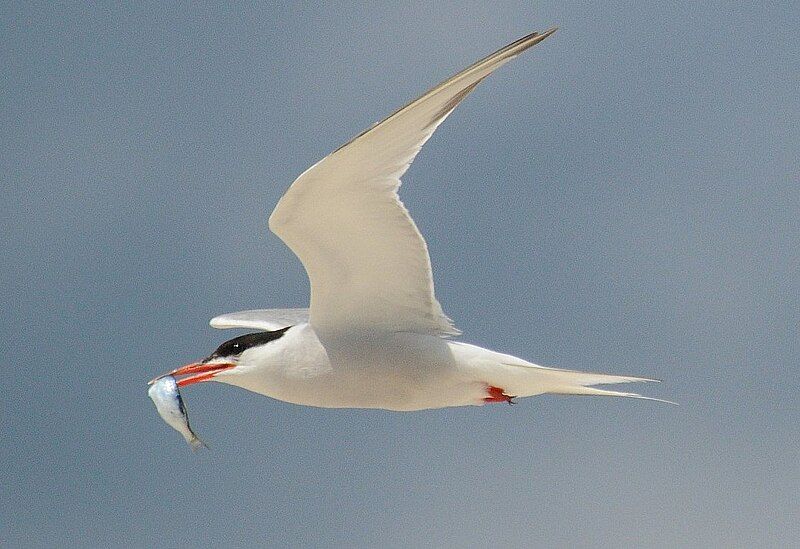
The common tern is a seabird that belongs to the family Laridae. It is widely distributed across the northern hemisphere, with four distinct subspecies breeding in temperate and subarctic regions of Europe, Asia, and North America.
This species is highly migratory, flying south in the winter to coastal tropical and subtropical areas. The common tern is a medium-sized seabird, typically with a black crown and white forehead. Its wings are long and pointed, and its forked tail is a distinctive feature.
Its long wings enable the bird to fly at a high speed and its buoyant flight is often seen as graceful and graceful. The common tern primarily feeds on small fish, which it catches by plunge-diving from a height of up to 30 meters.
It can also feed on invertebrates such as insects, crustaceans, and mollusks. The common tern nests in colonies and builds its nests on the ground, on rocky islands, or on driftwood. The nest is made of grass, twigs, seaweed, and feathers.
The female typically lays two to three eggs, and both parents take turns incubating the eggs. The common tern is a highly social species, often seen in large flocks. It has a shrill call that can be heard from some distance away.
It is a beautiful bird to watch, and its presence adds to the beauty of coastal and inland areas.
| Kingdom | Animalia |
| Phylum | Chordata |
| Class | Aves |
| Order | Charadriiformes |
| Family | Laridae |
| Genus | Sterna |
| Species | S. hirundo |
17. Budgerigar
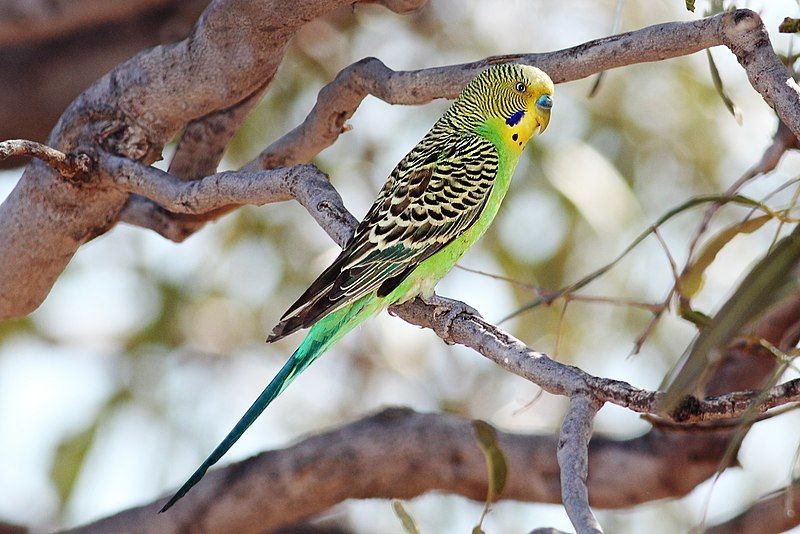
The budgerigar, also known as the common parakeet, shell parakeet, or budgie, is a small, long-tailed bird and a member of the parrot family. It is the only species in the genus Melopsittacus and is native to Australia.
Budgerigars have a distinct appearance, with their classic green and yellow feathers and black scalloped markings on the nape, back, and wings. They are primarily seed-eating birds, but also enjoy fruits, vegetables, and certain insects.
Budgerigars are highly social animals, living in flocks in the wild and forming strong bonds with other budgies in captivity. They are also highly intelligent and can learn to mimic words and phrases.
They can also be trained to do simple tricks, like flying from one hand to the other. Budgerigars are popular exotic pets, with many owners providing them with a large cage, plenty of toys, and a healthy diet.
They require a lot of attention and care, and owners should be sure to provide them with plenty of stimulation to help them stay active and healthy. Budgerigars are also highly sociable birds and should not be kept alone, as they prefer the company of other budgies.
| Kingdom | Animalia |
| Phylum | Chordata |
| Class | Aves |
| Order | Psittaciformes |
| Family | Psittaculidae |
| Genus | Melopsittacus |
| Species | M. undulatus |
18. Black-billed Wood Dove
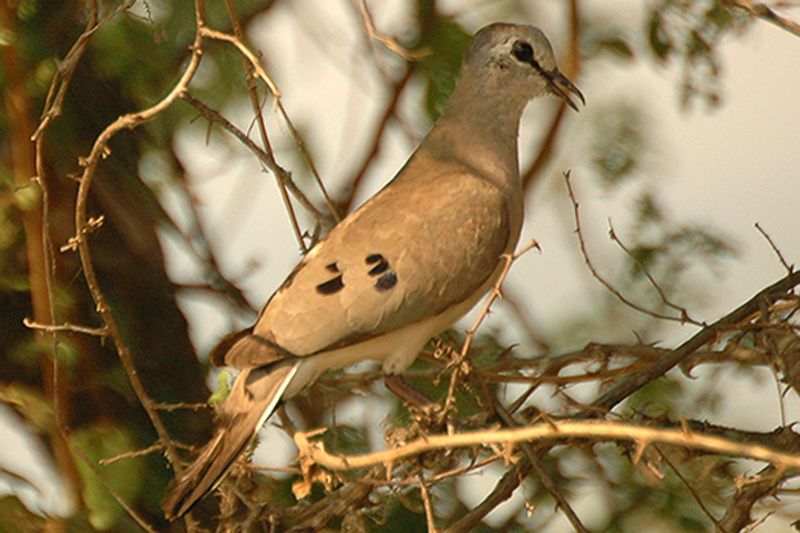
The black-billed wood dove is a type of pigeon found throughout Africa. It is a resident breeding bird, meaning that it lives in the same area and reproduces in that area year after year.
It is most commonly found in an area just south of the Sahara Desert, where it inhabits near desert, scrub and savannah areas. This type of pigeon builds its nest in a tree, typically an acacia, and lays two cream-colored eggs.
The black-billed wood dove is quite abundant in the areas it inhabits, making it a common sight for locals and visitors alike.
| Kingdom | Animalia |
| Phylum | Chordata |
| Class | Aves |
| Order | Columbiformes |
| Family | Columbidae |
| Genus | Turtur |
| Species | T. abyssinicus |
19. Klaas’s Cuckoo
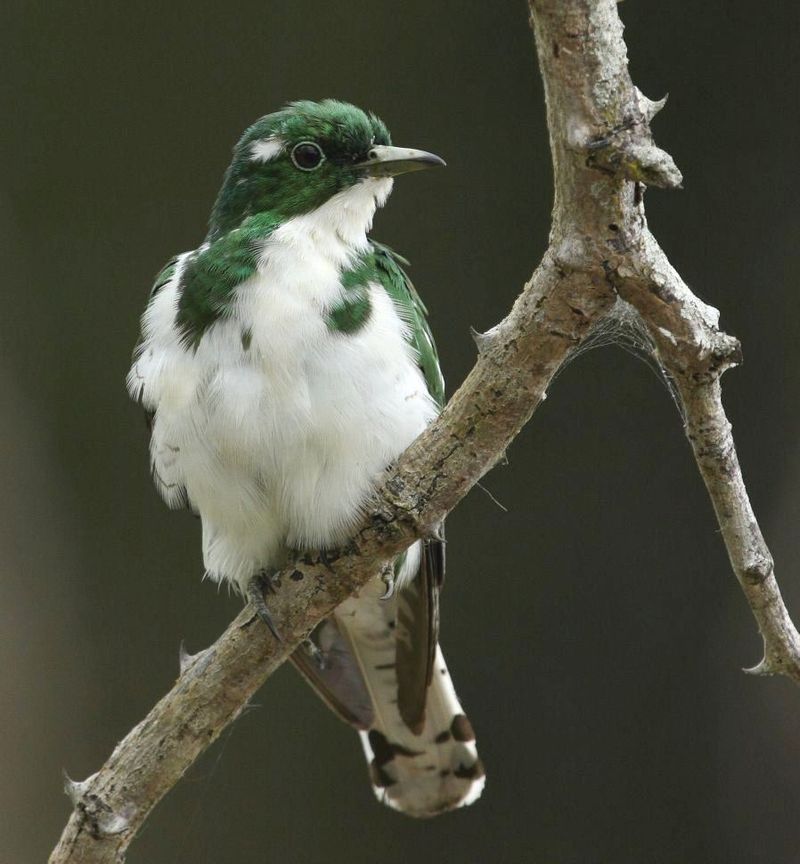
Klaas’s cuckoo is a species of bird belonging to the Cuculidae family, which is native to sub-Saharan Africa. It is often found in wooded areas, such as forests, woodlands, and savannas. The species was named after Klaas, a Khoikhoi man who collected the type specimen.
The type specimen is a particular example of a species that is used to define the characteristics of the species and is used as a reference point for further research.
Klaas’s cuckoo is a unique species, that has adapted to its natural environment and has been given the honorific name of Klaas in recognition of the man who discovered it.
| Kingdom | Animalia |
| Phylum | Chordata |
| Class | Aves |
| Order | Cuculiformes |
| Family | Cuculidae |
| Genus | Chrysococcyx |
| Species | C. klaas |
20. Vinaceous Dove
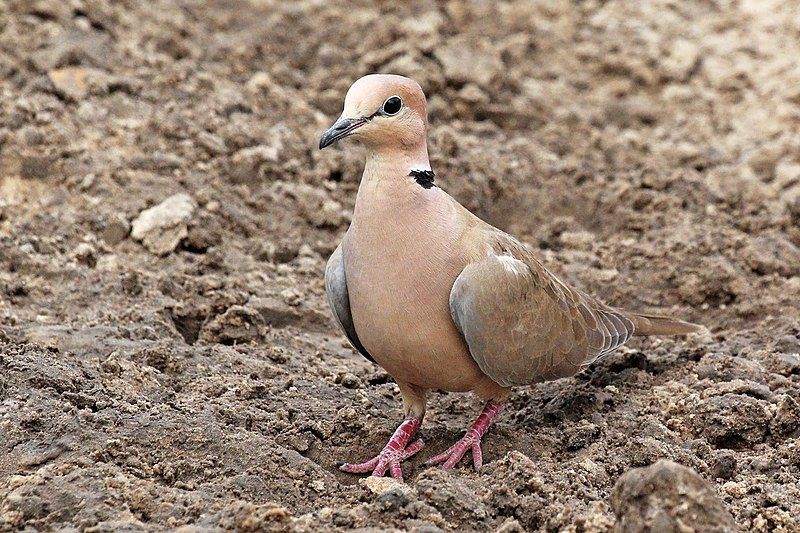
The vinaceous dove is a species of bird that belongs to the Columbidae family, which is also known as the pigeon family. This species is widely distributed across the Sahel and Sudan regions and is a common sight in these areas.
It has a distinctive appearance, with a chestnut-brown body, black wings, and an eye-catching white “V” on its chest.
It also has a white-tipped tail, a white-tipped beak, and reddish legs and feet. This species is highly adaptable and can be found in various habitats, such as woodlands, grasslands, and savannahs.
Its diet consists mainly of seeds, grains, and fruits, but also includes invertebrates, such as insects and spiders.
It is often seen foraging on the ground in small groups and is also known to form large flocks in the dry season. The vinaceous dove is an important species in its range, as it helps to maintain the local ecosystem by dispersing seeds and providing food for predators.
It is listed as a species of least concern by the International Union for Conservation of Nature (IUCN), indicating that it is not currently threatened with extinction.
| Kingdom | Animalia |
| Phylum | Chordata |
| Class | Aves |
| Order | Columbiformes |
| Family | Columbidae |
| Genus | Streptopelia |
| Species | S. vinacea |
21. Fiery-necked Nightjar
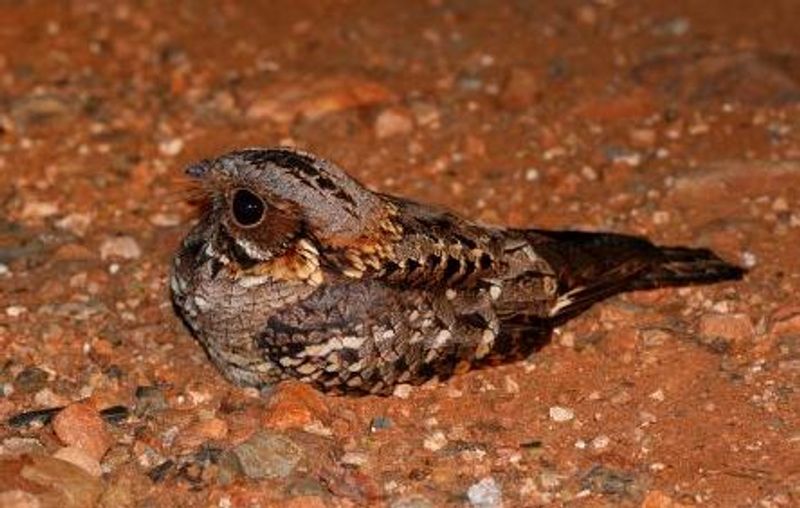
The Fiery-necked Nightjar is a species of bird found in the family Caprimulgidae. It is found in the southern parts of Africa and is known for its distinctive call, which has been described as “good-lord-deliver-us”.
The Fiery-necked Nightjar is a medium-sized bird with a reddish-brown upper body and white-grey underside. It has large eyes and a long tail, and its wings are short but broad. Its call is usually a repetitive, whistling sound, and it is often heard during the night.
This species of nightjar is usually found in dry woodlands and savanna habitats. It is a nocturnal bird, and can sometimes be seen perched on a tree or bush during the day. It mainly feeds on insects, but can also feed on fruits and berries.
The Fiery-necked Nightjar is an important species in its habitat, as it helps to control insect populations. It is also an important source of food for other animals, such as owls, hawks, and other birds of prey.
| Kingdom | Animalia |
| Phylum | Chordata |
| Class | Aves |
| Clade | Strisores |
| Order | Caprimulgiformes |
| Family | Caprimulgidae |
| Genus | Caprimulgus |
| Species | C. pectoralis |
22. Cattle Egret
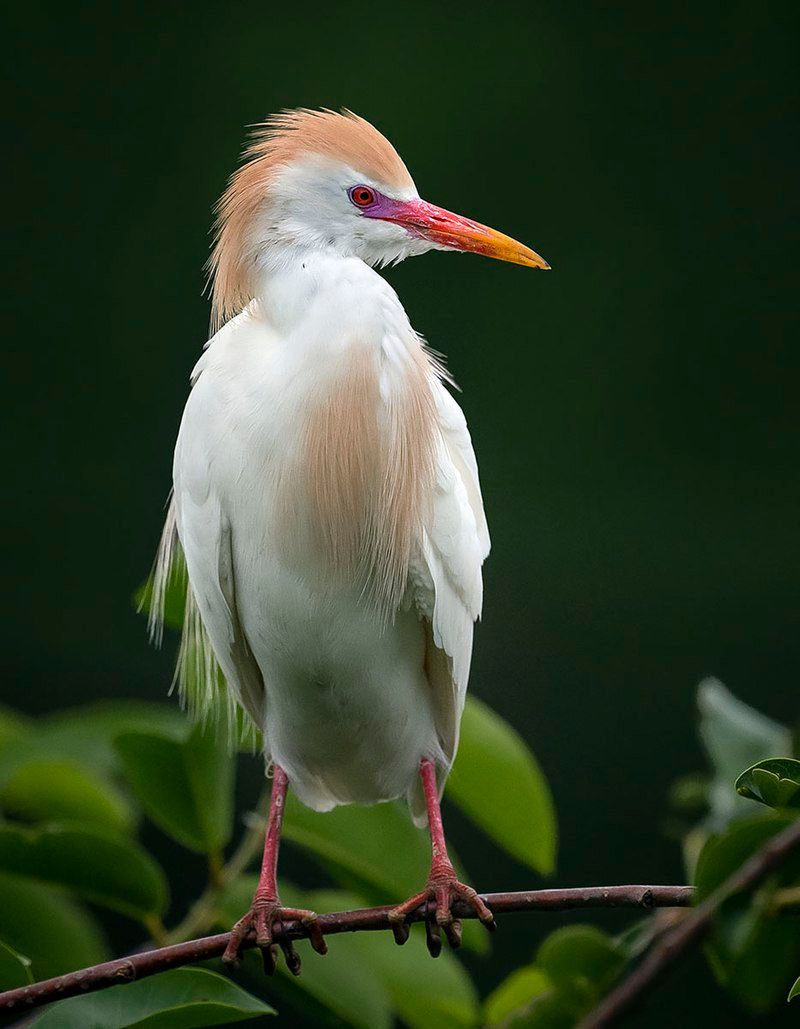
The cattle egret is a type of heron found in many parts of the world. It is native to the tropics, subtropics, and warm-temperate zones, and is the only species in its genus, Bubulcus.
However, there is some dispute among authorities as to whether the cattle egret should be regarded as one species with two subspecies, or two distinct species. The two subspecies are the western cattle egret and the eastern cattle egret.
Each has different physical features and distinct ranges, although they share some similarities in appearance and behavior. The western cattle egret is found in western, central, and southern Africa, as well as parts of Asia, the Middle East, and Europe.
It has a white body with a yellowish-orange bill and dark legs. It is slightly larger than the eastern cattle egret, and its wingspan is usually around 1.2 m. The eastern cattle egret is found in eastern Africa, India, and parts of Asia.
It has a white body with a yellow bill and grey-green legs.
It is usually slightly smaller than the western cattle egret, with a wingspan of around 1.1 m. The cattle egret is an adaptable species and can be found in a variety of habitats, including grasslands, wetlands, and open areas near water.
It is a social species and can be seen in large flocks, often feeding alongside other wading birds. It feeds mainly on insects, small fish, and other small animals.
| Kingdom | Animalia |
| Phylum | Chordata |
| Class | Aves |
| Order | Pelecaniformes |
| Family | Ardeidae |
| Genus | Bubulcus |
| Species | B. ibis |
23. Congo Pied Hornbill
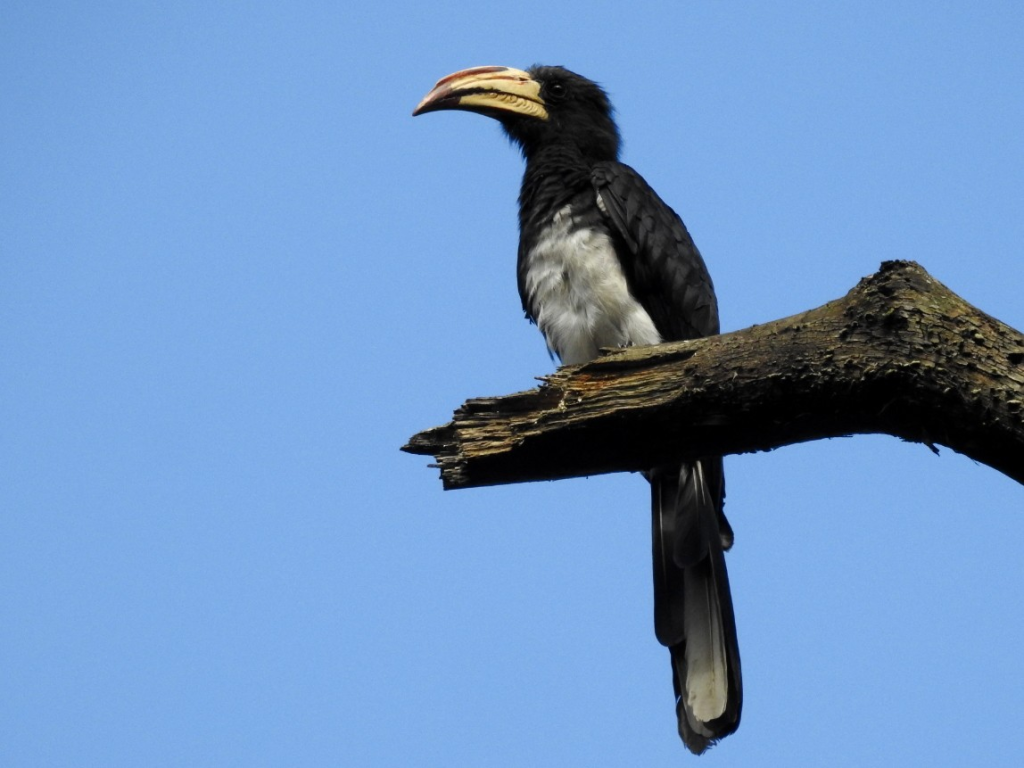
The Congo pied hornbill is a species of bird that belongs to the hornbill family. This family of near-passerine birds is found in the Old World, mainly in the tropics. The Congo pied hornbill is a widespread species in Africa, where it is a common resident breeder.
Its range extends from The Gambia in the west to western Uganda and northern Angola in the east. It is found in a variety of habitats, including tropical and subtropical moist lowland forests, dry savannah woodlands, and even some suburban gardens.
The diet of this species consists predominantly of fruit, although it also feeds on small invertebrates and may occasionally hunt small vertebrates. They are best known for their huge bill and bright yellow and black plumage.
The Congo pied hornbill is considered to be of least concern by the IUCN, due to its widespread range and stable population.
| Kingdom | Animalia |
| Phylum | Chordata |
| Class | Aves |
| Order | Bucerotiformes |
| Family | Bucerotidae |
| Genus | Lophoceros |
| Species | L. fasciatus |
24. Little Egret
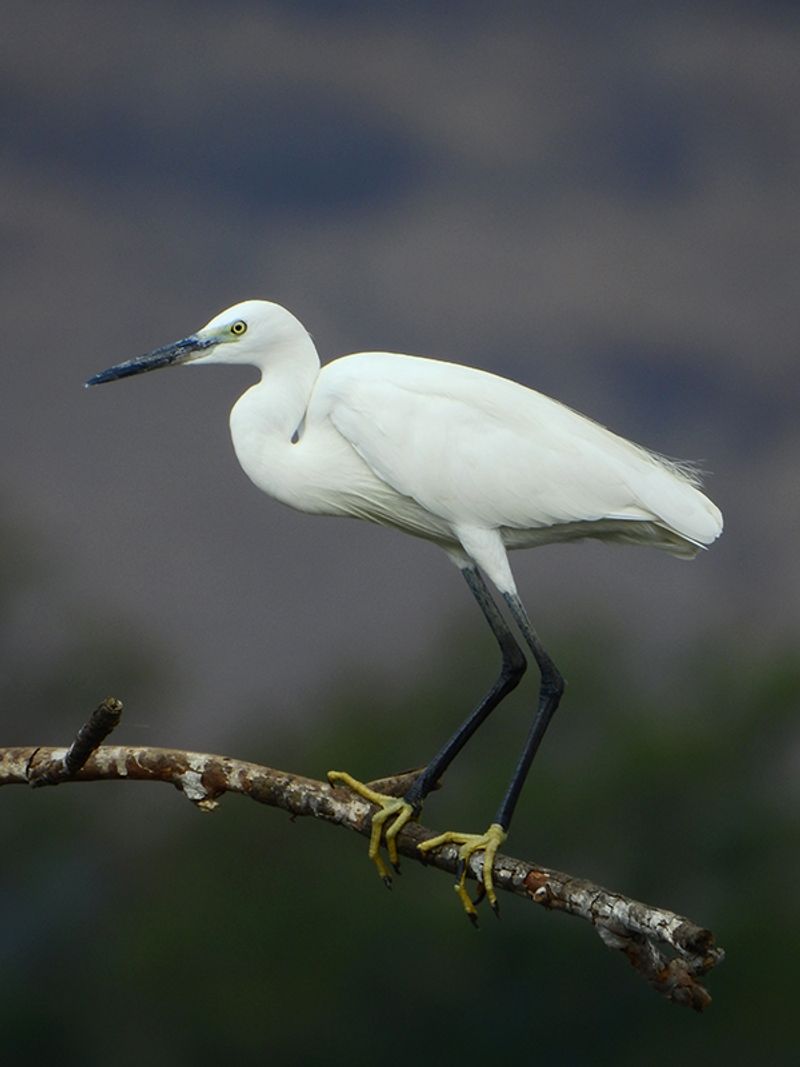
The Little Egret is a species of small heron found in the Ardeidae family. It is a white bird with a slender black beak and long black legs. In the western race, it also has yellow feet. As an aquatic bird, it feeds both in shallow water and on land.
It consumes a wide variety of small creatures, which include insects, worms, and other invertebrates. Its diet also includes small fish, amphibians, crustaceans, and reptiles.
The Little Egret is a graceful and elegant bird, often seen wading and stalking through shallow water in search of food. It also feeds on the banks of rivers, lakes, and ponds, and sometimes even on agricultural land.
Its long neck and beak allow it to reach into deeper water and search for prey. The Little Egret is an important part of the local ecosystem, helping to keep insect and other small creature populations in check.
| Kingdom | Animalia |
| Phylum | Chordata |
| Class | Aves |
| Order | Pelecaniformes |
| Family | Ardeidae |
| Genus | Egretta |
| Species | E. garzetta |
Conclusion
Birds in Greater Accra make up an important part of the region’s biodiversity. They play a vital role in the local ecosystem, providing food, shelter, and resources for other species, as well as pollinating plants and dispersing seeds.
Despite the threats posed to their habitats, there is still a great diversity of bird species in the area, which is encouraging for the future of biodiversity in the region.